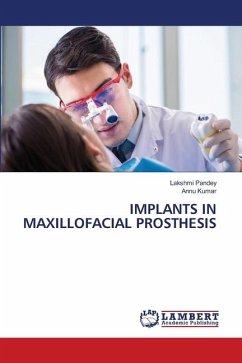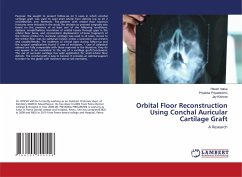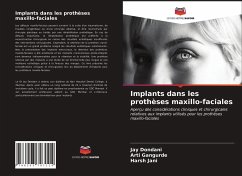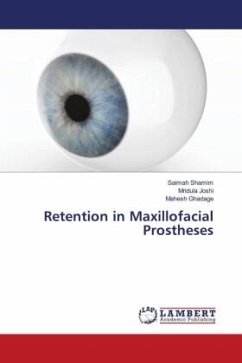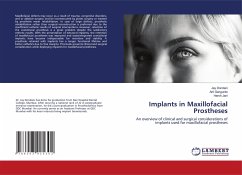
Implants in Maxillofacial Prostheses
An overview of clinical and surgical considerations of implants used for maxillofacial prostheses
Versandkostenfrei!
Versandfertig in 6-10 Tagen
36,99 €
inkl. MwSt.

PAYBACK Punkte
18 °P sammeln!
Maxillofacial defects may occur as a result of trauma, congenital disorders, and or ablative surgery, and be reconstructed by plastic surgery or treated by prosthetic mean rehabilitation. In case of large defects, prosthetic rehabilitation rather than surgical reconstruction is preferred due to the insufficient esthetic results of surgical interventions. However, retention of the craniofacial prosthesis is a great problem despite the satisfactory esthetic results. With the presentation of extraoral implants, the retention of maxillofacial prostheses was improved and osseointegrated craniofacia...
Maxillofacial defects may occur as a result of trauma, congenital disorders, and or ablative surgery, and be reconstructed by plastic surgery or treated by prosthetic mean rehabilitation. In case of large defects, prosthetic rehabilitation rather than surgical reconstruction is preferred due to the insufficient esthetic results of surgical interventions. However, retention of the craniofacial prosthesis is a great problem despite the satisfactory esthetic results. With the presentation of extraoral implants, the retention of maxillofacial prostheses was improved and osseointegrated craniofacial implants have become indispensable for retention and stability. A prosthesis retained with implants has a longer functional lifetime and better esthetics due to fine margins. This book presents clinical and surgical consideration while deploying implants for maxillofacial prostheses.



